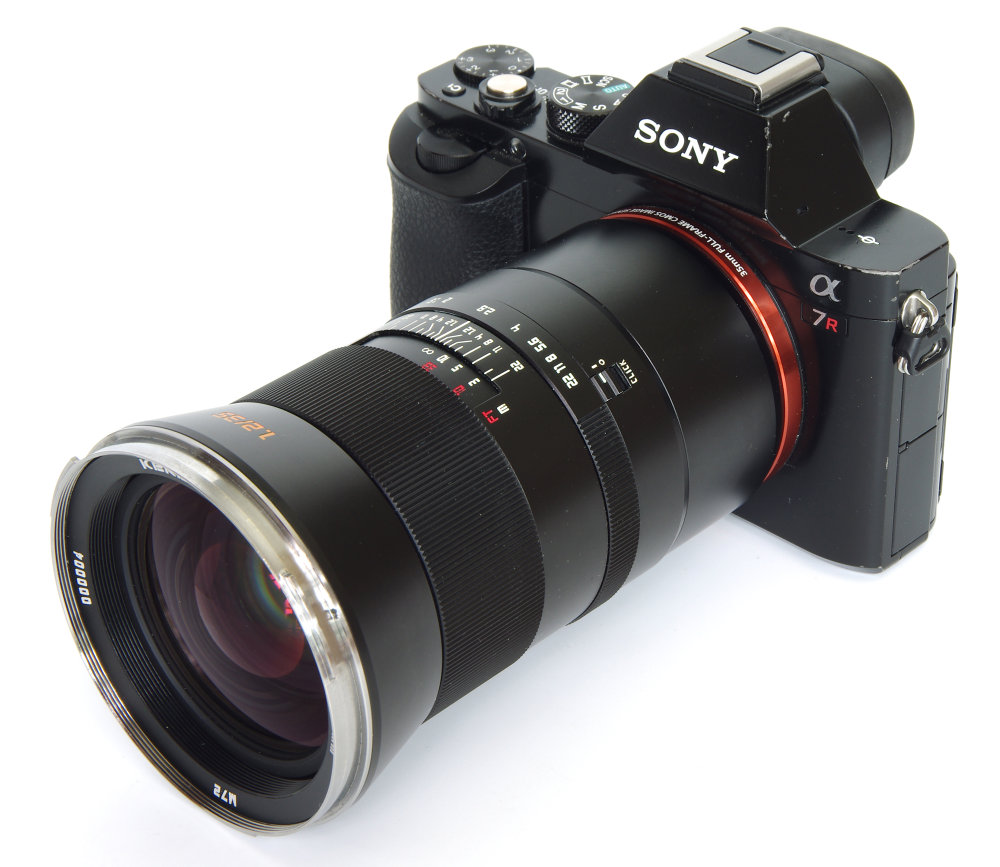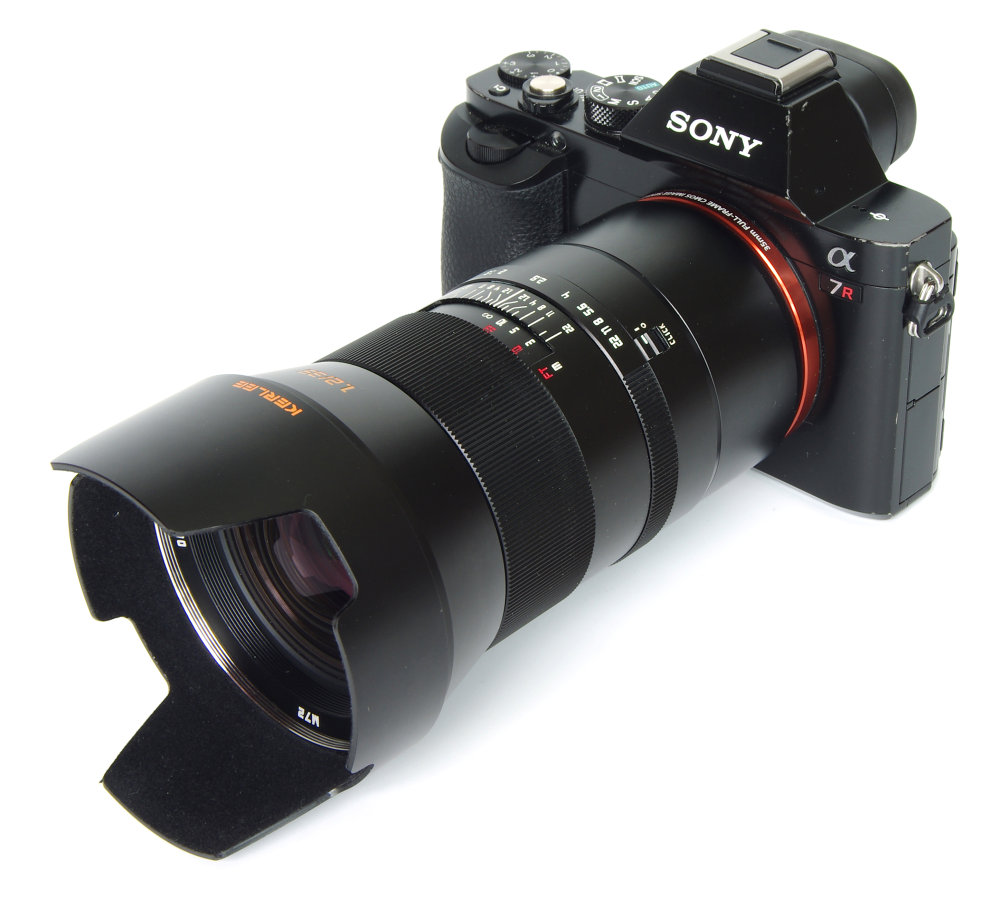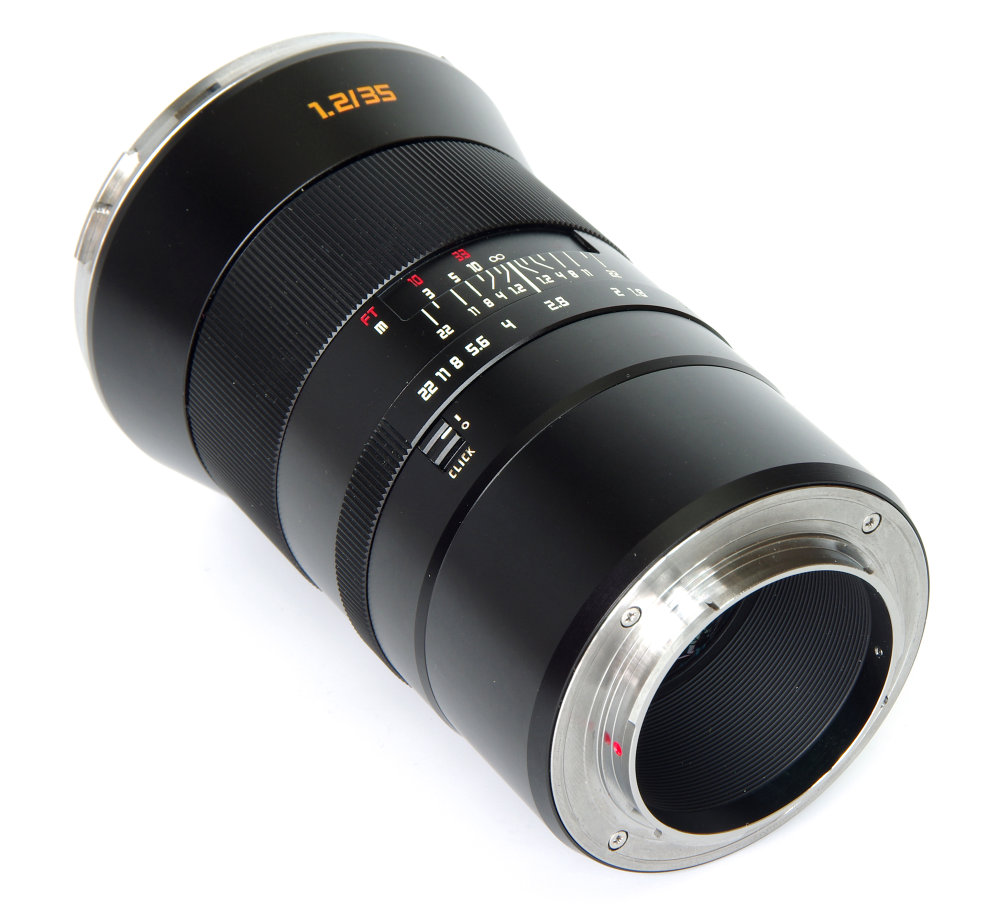DZOptics Kerlee 35mm f/1.2 Lens Review
DZOptics Kerlee 35mm f/1.2 Handling and Features
We have a 35mm f/1.2 full frame lens, available in Nikon F, Canon EF, Sony E and Pentax K mounts. It is fully manual focus. This is the fastest lens ever offered in a 35mm lens, at least for full frame SLR cameras. It is clear from the mount options that the lens is aimed at the full frame DSLR, although it will of course also be usable on many APS-C models in the same ranges. The review copy was supplied in Sony E mount, along with a Sony Alpha a7r body. Manual operation was not the easiest with this camera, but the technique of using open aperture to focus and then stopping down to take the picture worked quite well. The aperture ring is click stopped, so focusing and then counting ten clicks gives f/8, a likely commonly used aperture, so in practice it becomes quicker as we become more familiar. The click stops can also be switched off, which is a boon for video shooters.
In any event, the mount is totally manual, with no electronics. So the aperture stays where it is put and there is no stop-down mechanism. The aperture blades actually look very impressive, being 14 in number. This gives an almost perfectly round aperture, so bokeh is likely to be very smooth.
A 35mm lens is a versatile optic, for many being a “wide standard” lens. It can be used in a variety of ways, for almost all subject matter from street photography to landscapes. The f/1.2 aperture aids focusing manually and will have implications for bokeh and whisper-thin depth of field. Flat on subjects could be tackled in very low light levels whilst still keeping a fast enough shutter speed to avoid camera shake. Interestingly, the manufacturer quotes the optimum optical quality as being between 1-5 metres, from quite close to medium distance.
The lens is a good looking beast, obviously heavy at 690g for its size and made of solid metal and glass. There are 11 elements in 10 groups, including one ED (extra low dispersion) and two high refractive index glasses. The 14 diaphragm blades look as impressive as those we might find on old brass lenses of a very different era, but here they are crisp and new and, as mentioned, bode well for smooth bokeh. Closest focus is 0.3m, giving a maximum magnification of 0.12x. Being totally manual, the only control is the on/off switch for the aperture click stops. This switch is quite small and the finish on the review sample was not quite up to the rest of the lens.
Otherwise, overall quality of finish was very high, with just that small question mark over the click stop switch. The provided bayonet lens hood, also metal, fits smoothly onto a very substantial front bayonet fitting. However, unlike most bayonet fits it will rotate continuously, there being no stop. There are click positions, but the actual fitting needs a very small turn indeed to secure the hood. Once this is realised, the fitting is smooth and positive.
Focusing at f/1.2 is very easy. As expected, the depth of field is so small that focus is a very precise point. The technique of focusing at open aperture and then counting click stops to the desired setting means that the lens can be used without taking the camera from the eye. In terms of handling, the Kerlee 35mm f/1.2 is as efficient as any manual focus lens can be.
Add your message
Please login here or if you've not registered, you can register here. Registering is safe, quick and free.
photodo Stats
428 MTF tests
74 in-depth photodo reviews
100+ users join each day
Help the lens community by reviewing or rating a lens today via our lens search
Latest Lens Reviews
- Chinon 28mm f/2.8 Vintage Lens Review
- Canon EF 70-200mm f/4L IS II USM Lens Review
- Samyang AF 85mm f/1.4 EF Review
- Sigma 70mm f/2.8 DG Macro Art Review
- Samyang AF 24mm f/2.8 FE Review
- Meike 50mm f/1.7 Review
- Tamron 70-210mm f/4 Di VC USD Review
- Lensbaby Burnside 35mm f/2.8 Review
- Asahi Super Takumar 50mm f/1.4 Review
- Asahi Super-Multi-Coated Takumar 135mm f/3.5 Review



